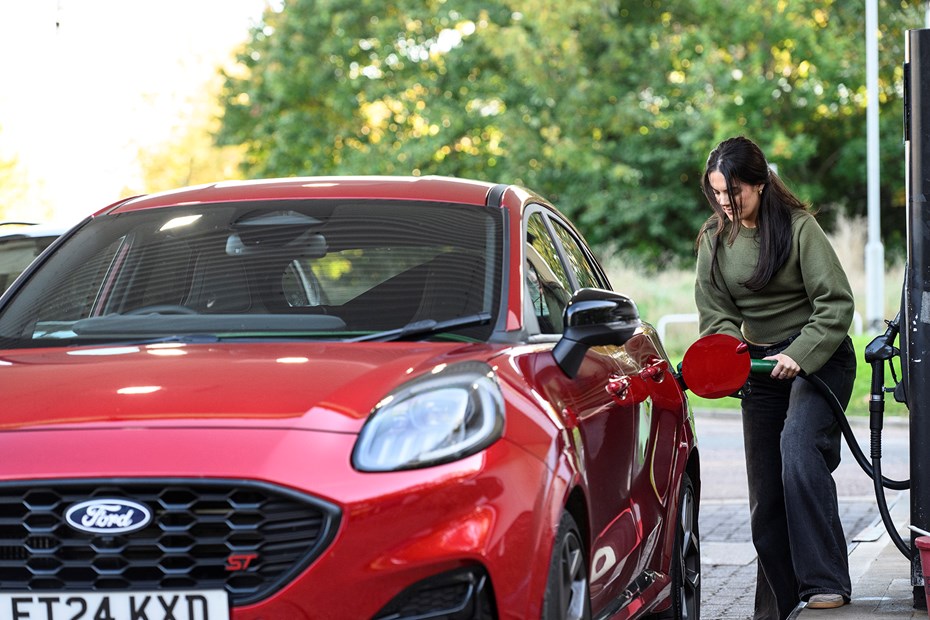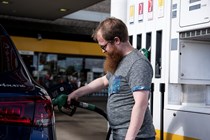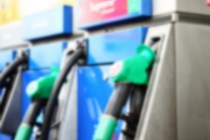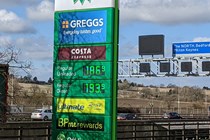UK drivers are feeling the pinch at the pumps yet again, with petrol prices hitting their highest level since last September. According to the latest figures from RAC Fuel Watch, this marks the fifth consecutive month of rising costs. Diesel drivers aren’t faring much better, as prices continue to climb. Here’s what’s behind the surge — and what it means for your wallet.
In February, petrol prices edged up by 0.65p to an average of 139.65p per litre — the highest since September 2024. Diesel also saw a rise of 0.73p, hitting 146.48p per litre, a level last recorded in late August. With both fuels climbing for the fifth consecutive month, drivers are feeling the strain at the pumps.
Filling up a family-sized petrol car now costs £76.81, almost £3 more than the £73.88 it set you back in October (134.33p per litre). Diesel drivers are feeling the sting even more, with a full tank now costing £80.56, a rise of over £4 since early October last year (£76.45 at 139p per litre).
Pump prices have been pushed up as retailers faced higher wholesale costs, driven by the rising cost of oil, which hit $82 a barrel in mid-January.
This surge was mainly due to increased demand in the northern hemisphere caused by the cold snap, along with concerns about potential supply disruptions ahead of the United States presidential changeover. However, with oil prices and wholesale fuel costs now falling for several weeks, pump prices are expected to start coming down as well.
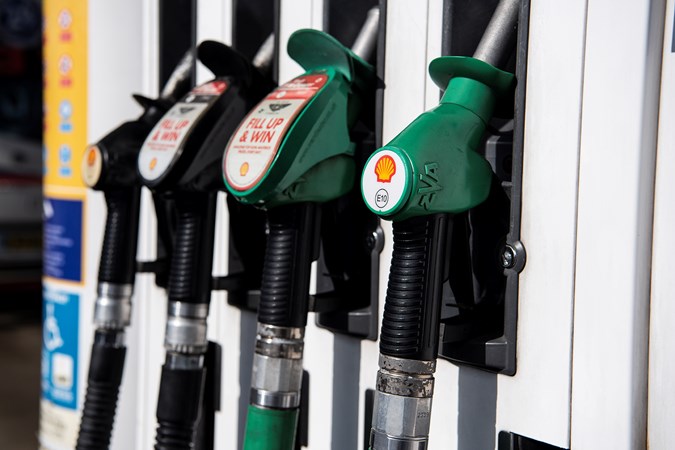
RAC fuel spokesperson Simon Williams said: ‘It’s disappointing to see pump prices up yet again in February, with drivers now facing some of the highest costs at forecourts since the end of last summer.
‘We hope better times are on the horizon. With wholesale fuel costs falling throughout February, there’s a good prospect petrol and diesel prices will come down this month as retailers buy fresh stock at lower prices. As always, it really does pay to shop around because pump prices at supermarket sites vary by as much as 13p a litre.’
Though pump prices are expected to slowly come down, it’s still worth shopping around to find the cheapest fuel and planning your fill-ups carefully to save where you can.
Big differences in cheapest, most expensive fuel
The RAC’s data shows that there are some massive discrepancies between the cheapest and most expensive prices charged by certain retailers. Across Asda’s forecourts, there’s a whopping 12.0p gap between its cheapest (129.7p) and most expensive (141.7p) petrol, and a 15.0p difference in diesel prices – a low of 134.7p and a high of 149.7p. Though it’s worth pointing out Asda’s portfolio includes several hundred non-supermarket locations.
By contrast, Morrisons has the most consistent prices. There’s a 9.0p difference in its petrol prices (132.9p low and 141.9p high) and 11.0p in its diesel prices (138.9p low and 149.9p high). Though it’s worth noting that Tesco’s has the cheapest petrol and diesel, at 128.9p and 132.9p.
Of the other fuel retailers, the RAC says that Shell has the highest average fuel prices – 142.4p for petrol and 150.2p for diesel. BP prices are very nearly as high. Essar is by far the most consistent retailer, having no differences in prices for both petrol and diesel (134.9p & 141.9p).
Regional price variations persist across the UK, as well, particularly between Great Britain and Northern Ireland. The average price of petrol in NI is 5.8p less at 133.2p, while diesel is 6.8p less at 139.0p.
Until such time as Fuel Finder is up and running, you can get live fuel prices in your area on the myRAC app.
Fuel prices are due to a number of factors:
1. Crude oil price
2. E10
3. Delivery
4. Retailer margin
5. Fuel duty and VAT
Crude oil price
The price of crude oil is directly reflected in UK petrol and diesel prices. Indirectly, the cost of living is increasing as the price of goods and services have to be raised in line with the higher costs of running a business and its associated logistical operations – deliveries and so on.
The price of crude oil dropped to a low of $72 (£55) back in October 2024, still well below the 2022 high of $140 (£107). However, January 2025 saw prices surge past $80 (£63). Oil prices are constantly shifting due to a range of ever-changing factors that influence their value.
After straightforward supply and demand calculations, the increasing number of unpredictable natural disasters, geopolitical instability, looming global recession and Russia’s invasion of Ukraine are all major factors in the price of oil. On top of that, Saudi Arabia recently announced it intends to cut oil production, which will also have a bearing on crude oil prices in the coming months.
The price of pump fuel is 90% determined by the wholesale price of Brent crude oil, according to RAC Fuel Watch. Whatever other factors may be in play, the price of crude oil is the dominant force behind the cost of fuel. Inconveniently, the price of pump fuel tends to lag behind that of crude oil, so it can be weeks before a fall in prices filters through to forecourts.
Delivery
The logistics of getting petrol and diesel to fuel stations via shipping channels and road tankers accounts for 1% of the total price of your fuel. That has a knock-on effect to business and industry, as well research by MoneySupermarket in 2022 revealed that almost a quarter of vans drivers (24%) have turned down job opportunities because the high price of fuel means they are not cost effective.
It’s not clear if the on-going shortage of lorry drivers, which affects the fuel delivery sector of the haulage industry as much as any other, has had an effect on fuel prices. However, the shortages have driven up driver wages and we suspect a knock-on effect passed down to the consumer has been unavoidable.
Retailer margin
The mark-up charged by fuel retailers is the most contentious factor in the price of fuel. The RAC Fuel Watch team has been heavily scrutinising it for a long time; generally speaking, it can be anything from 2 to 10% of the price of a litre of fuel.
In June 2022, the Competition and Markets Authority (CMA) opened an investigation into forecourt prices, chief executive Andrea Coscelli saying it would, ‘provide advice to government on steps that might be taken to improve outcomes for consumers across the UK.’
In May 2023, the CMA reported that there is a significant lack of competition in the fuel retail industry, which is dominated by the supermarkets in Great Britain, and that has kept prices unduly inflated. For their part, petrol retailers maintain that their own costs remain high. The Petrol Retailers Association said that margins are, ‘often not enough to cover operating costs.’
Fuel duty and VAT
Fuel duty and VAT still play a significant role in what you pay at the pump. As of March 2024, the UK government extended the temporary 5p per litre cut in fuel duty until March 2025, keeping the rate at 52.95p per litre for petrol and diesel. This extension prevented the expected inflationary increase, keeping fuel duty rates stable for now.
On top of fuel duty, there’s VAT, charged at 20% on the combined fuel price and duty. This means that any change in the base price of fuel or adjustments to fuel duty are further amplified by VAT, making the impact on your wallet even greater. Even minor tweaks to fuel duty can lead to noticeable increases at the forecourt, making these taxes a key driver of what you’re paying to fill up.
E10 petrol
In September 2021, E10 petrol replaced E5 at UK fuel stations. Both are biofuels, ‘E’ refers to plant-based ethanol, 10 is the percentage of ethanol in the fuel mix. Doubling the renewably-sourced component in petrol is said to make it more environmentally friendly.
However, a number of Parkers’ readers have reported that they are seeing significant reductions in the fuel economy of their vehicles running on E10 petrol. Some have switched to more expensive Super Unleaded – still a 5% bio-mix – to maintain their vehicles’ fuel economy.
The ethanol mix accounts for 6% of the price of petrol; the wholesale cost of ethanol has recently risen, as well. Ethanol is also used in B7 diesel fuel, accounting for 9% of its price.
What you can do to reduce your fuel bills
Driving more economically will help the situation. Accelerating more slowly is an easy win, as is making fewer short journeys. Increasing the distance between your car and the one in front helps, as well – the extra space means you can brake more gently when it slows down.
These small changes to the way you drive have the same effect as compound interest. The difference in fuel economy may seem negligible at first but, over the longer term, it adds up to make a big difference.
You should also shop around for fuel. Remember that supermarkets aren't always the cheapest and consider using the Petrol Prices app, which shows the pricing in your area.
If you’re looking to change your car, look more closely at fuel consumption figures. While considering a switch to an electric car will give cheaper running costs in terms of Miles Per Pound, be mindful of increased domestic electricity usage to make an informed decision.
Is it worth switching to electric?
As more motorists turn to electric vehicles (EVs) to escape the hidden costs of traditional fuel, the allure of improved environmental credentials is undeniable. However, the question remains: is it truly a cost-effective choice?
Since 2022, domestic electricity prices have skyrocketed, placing a financial strain on homeowners charging their EVs at home. By 2025, these costs have continued to rise, challenging the notion that switching to electric can help avoid escalating expenses.
If you're weighing your options and uncertain whether an electric vehicle is right for you, check out our comprehensive guide on Hybrid vs. Electric vs. Petrol vs. Diesel Cars. This can help you assess the best choice for your driving needs and financial situation.
For all the latest advice, news and finance deals, sign up to the Parkers newsletter.
Just so you know, we may receive a commission or other compensation from the links on this website - read why you should trust us.


